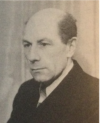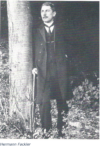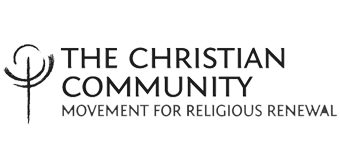Latest News
Kitchen Chat and more…
Kitchen Chat and more…
Die Gruender der Christengemeinschaft: Ein Schicksalsnetz
By Rudolf F. Gaedeke
Translated by Cindy Hindes
Wilhelm Ruhtenberg – January 17, 1888, Riga – August 31, 1954, Bensberg
Wilhelm Ruhtenberg was born in Riga on January 17, 1888, the fourth of six children. His father ran a large cigarette factory in the former Hanseatic city with worldwide trade relations through the Russian Empire to Vladivostok. The upper-middle-class life of a Baltic family based on traditions formed the framework of the boy’s childhood. In the tenth year of his life, a serious illness forced him to a two-year sickbed. In order to spare him the ancient languages, his father sent him to a secondary school after his recovery. Throughout his life, Ruhtenberg admired his teacher there with gratitude.
Reading a biography of a minister (O. Funke, Die Fußspuren des lebendigen Gottes auf meinem Lebenswege [Footprints of the Living God on My Life Path]) ignited in him the will to become a pastor. The tradition of the merchant family and the unsuitable school education without ancient languages initially stood in the way. But his father allowed him to take private lessons in Latin and Greek so that a special examination would allow him to graduate from secondary school and study theology.
Ruhtenberg studied at the University of Dorpat from the autumn of 1907 until his academic exams with Adolf von Harnack in the autumn of 1914. He spent one semester each in Berlin and Leipzig. His disappointment with the study of theology and its then-common textual criticism of the Bible was so deep that acting as a preacher of the Gospel and pastor was out of the question.
His time in Dorpat, however, brought him a meeting with Nora Umblia, who was born and raised there. Their marriage, celebrated in 1913, brought two children. Without later remembering personally, he also met the student Herbert Hahn in Dorpat.
The First World War isolated the young family in Riga. They had to refrain from traveling abroad or studying. Ruhtenberg became a teacher at a private high school in Riga in 1914, and at the end of 1915, pastor-adjunct at St. Gertrude’s Church until 1917. While he was devoting his time primarily with private philosophical studies, the end of the war came and then that most terrible, inhuman time.
After the serious illness that he had survived in childhood, he now came even closer to death from hunger and months of mortal danger during the occupation. His wife managed to escape with the children. He himself was initially hired under the Bolsheviks as an elementary school lecturer. He had become acquainted with Rudolf Steiner’s writings at a bookseller’s in Riga and had an enduring enthusiasm for Steiner’s Riddles of Philosophy. This presentation rekindled in him a confidence in thinking and thus in the spirit. His audience grew when he treated the ancient Greek thinkers (pre-Socratics) with this background.
But because he was a pastor, he was suddenly taken to Dünaburg with a penal battalion condemned to death. He survived this time probably only because he had previously trained his body, weakened by hunger, to good performance through much sport. Now, with the help of Jews, and disguised as a Jew, he was able to escape by ship across the Baltic Sea to Lübeck (1919). Behind him, in the east, a world was lost.
He then had the inner certainty that he would have to move to Stuttgart. There the future would show itself; above all, he would meet Rudolf Steiner. So he went to Stuttgart, met his wife and children again and heard a public lecture by Rudolf Steiner for the first time. Soon he became a member of the Anthroposophical Society. Then followed the great years of intensive double activity. First, Rudolf Steiner soon accepted him as a class teacher in the Waldorf School (January 1921). He was exactly 33 years old when this request, which he had made, was granted.
The family lived – always with a few boarding students – in a small wooden house on the school grounds on Uhlandshöhe. A small fortune had been lost to him in the collapse of Futurum A.G. in Switzerland. ( Futurum A.G. was an “Economic Society for the International Promotion of Economic and Spiritual Values”, i.e. a bank-like institute, with headquarters in Dornach existing from 1920 to 1924.)
Before being hired as a teacher, Wilhelm Ruhtenberg had asked Rudolf Steiner if he should take over an offered pastorate. Rudolf Steiner wanted only to answer the question in the affirmative if it would be possible to preach from the pulpit about repeated earth lives—only then would it make sense.
 In addition to his work as a classroom teacher, he was soon appointed as a teacher of independent Christian religious education with the task of holding Sunday services as well. His religious groups had over sixty children! During the same period, people repeatedly turned to him – or were sent to him by Rudolf Steiner –requesting baptisms or marriages.
In addition to his work as a classroom teacher, he was soon appointed as a teacher of independent Christian religious education with the task of holding Sunday services as well. His religious groups had over sixty children! During the same period, people repeatedly turned to him – or were sent to him by Rudolf Steiner –requesting baptisms or marriages.
So it happened that he asked Rudolf Steiner for a baptismal ritual and a wedding ritual and received them – with the details for the vestments and other elements of the ceremony. In this way, shortly before the actual founding of The Christian Community, when the nascent circle of priests was just forming, there were six baptisms and one wedding with the same wording as was then handed over to The Christian Community. The rituals were given to Ruhtenberg as an ordained pastor, because he had official authorization to perfom baptisms and weddings.
Then the time came for the immediate founding of The Christian Community. Ruhtenberg took part in all the preparatory courses from the beginning and was ordained a priest in Dornach on September 16, 1922, as the fourteenth member of Emil Bock’s circle. Although he was now also a priest, he continued to work as a teacher at the Waldorf School in Stuttgart until 1930. Then he worked – after a second marriage – from 1933 in the congregations of Rostock, Leipzig and especially Chemnitz until the ban of The Christian Community in 1941. After the ban and the end of the war, which Wilhelm Ruhtenberg survived in the ‘army post billing center’ in Chemnitz, there was strangely no more permanent parish work. After his escape, we find Wilhelm Ruhtenberg with friends in Überlingen working as a curative teacher in Holstein and finally in Bensberg near Cologne, where he died on August 31, 1954.
His path had led him from east to west. Then came the line added from south to north. His special mission was to be a special link between the school movement and The Christian Community, which he entirely fulfilled in the middle of his life. He embodied a very unique combination of an aristocratic, cosmopolitan attitude of body and mind with a tender ‘eastern’ soul. As a result, he was extraordinarily sensitive and vulnerable. This is how his friend and colleague Herbert Hahn described him from the founding years of the Waldorf School. This tender soul was also evident in his fine translations of the poetry of the Russian Alexander Remisow. (Further details of his biography can be read in Der Lehrerkreis um Rudolf Steiner in der ersten Waldorfschule 1919-1925, 2nd ed. Stuttgart 1978, p. 205ff.)
The Transfiguration on the Mountain (Mat. 17:1-18)
Never in the life of Christ on earth was the contrast between height and depth, between light and darkness, greater than at the Transfiguration on the mountain and the drama that followed it. He had only just appeared in His true form on the mountain when at the foot of the mountain He was confronted with diseased humanity that brought Him to despair. “How weak are the hearts of men, and how distorted the image of man has become in them. How long must I still be with you? How long must I still bear you?”
This shrill contrast is the distinctive hallmark of Christ and of those who want to follow Him. Church Father St. Augustine once expressed it most succinctly with the words: “The history of Christianity takes its course between the persecutions of the adversary powers and the consolations of God.” This is true not only for Christians, but also for Christ Himself—to be lurched this way and that between persecution and consolation, between transfiguration and temptation. Not only is this His destiny, but it is also His self-chosen destiny, no matter now hard that sounds. For after His resurrection He gives Himself the answer to His desperate question: “How long must I still bear you?” “I am in your midst all the days until the completion of earthly time.”
In the Consecration of the Human Being we ascend the mountain. The mountain—that is the altar. The Latin words alta area mean: raised area for offering. Even though we do not see it with our eyes, it is the place where Christ appears in His true form, Every time the bread and wine are raised in His name, Christ is transfigured again. Every time we receive the holy meal we can say with Peter: “Lord, it is good that we are here.” And every time the holy act has been fulfilled He descends from the mountain with us, from the consolations of God back to the persecutions of the adversary powers on earth.
–Rev. Bastiaan Baan, March 5, 2023
Hermann Fackler, March 10, 1886, Lörrach – July 19, 1978, Stuttgart
 Hermann Fackler, too, was already a long-serving pastor when The Christian Community was founded. At thirty-six, he belonged to the group of the older ones at that time. Nevertheless, he was still able to serve the movement for over fifty years.
Hermann Fackler, too, was already a long-serving pastor when The Christian Community was founded. At thirty-six, he belonged to the group of the older ones at that time. Nevertheless, he was still able to serve the movement for over fifty years.
Hermann Fackler was born in Lörrach on April 10, 1886, as the son of a Protestant veterinarian and a Catholic mother from Breisach. He was baptized Catholic. His mother died shortly afterward as a result of the birth, so his father had to place his young son in the care of a loving, simple cobbler family for the first seven years. In the first ten years of his life, the boy was not spared serious childhood illnesses. Due to whooping cough, he suffered a lifelong ear ailment. For the next two and a half years, however, he was healthy and spry, apart from an accident in the icy Sudeten Mountains, which later afflicted him greatly.
When his father married again, this time to a Protestant woman, the boy was allowed to move in with his parents in Donaueschingen in 1893. He attended the humanist grammar school and Protestant religious instruction but also had deep religious experiences when visiting his mother’s relatives in Breisach and Freiburg and attending mass in the cathedrals there.
When his father was transferred to the Ministry of the Interior in Karlsruhe in 1898, his son attended confirmation classes with the city pastor Brückner, who impressed him so much that the boy wanted to become a pastor himself. Immediately after graduating from high school in 1905, he went to Heidelberg University, where he studied philosophy with Wilhelm Windelband, dogmatics with Ernst Troeltsch, and exegesis with Adolf Deißmann. He went to Berlin for two semesters to hear Adolf von Harnack lecture on church history and Reinhold Seeberg on dogmatics. All these professors have gone down in the history of science with their life’s work.
Nevertheless, for the young man, the study was unsatisfactory. It brought a lot of useless head knowledge (textual criticism, for example) and no preparation for religious practice. One learned to preach but not how to pray with people. The theoretical and practical examinations were taken in 1908/09. Then followed vicar positions in Baden, among others in Waldshut on the Rhine, where he met his wife. He received a position as “pastoral chaplain” in Immendingen (Hegau) in 1912. His wife, Getrud, née Leyendecker, had been a deaconess in Freiburg and was able to help him with the care of a large parish area and several military hospitals in the following years during the First World War.
If the discrepancy between studied theology and practiced religion was already difficult for Hermann Fackler, the problems grew even greater when he became intensively involved with the star mythology of Professor Arthur Drews from Karlsruhe during these years (1913-1919). He knew Drews personally from many visits and found access to the cosmic aspect in his book Die Christusmythe [The Christ Myth]. But how could he proclaim death and resurrection if Christ had not lived at all? Even the philosophy of ‘as if’ only helped to reach an insipid compromise.
In 1919 Hermann Fackler became parish administrator in Rheinfelden on the Upper Rhine, not far from Basel. The dean who introduced him invited him to his Freemason lodge because of his inaugural sermon (on 1 Peter 2:5), in which a word about Freemasonry had been spoken. The dean was Master of the Chair. Thus Hermann Fackler became an ‘apprentice’ in the Lodge “Friedrich zur Eintracht” in Lörrach and found cultic brotherly fellowship in which he could feel a remnant of the air of mystery.
In September 1920, a blind man asked Hermann Fackler to come with him to Dornach near Basel to see Rudolf Steiner’s ‘crazy house’ through his eyes. This is how Hermann Fackler found his way to the first Goetheanum and was immediately enthusiastic. He and his wife then went repeatedly to Dornach. They attended eurythmy performances and began to read Rudolf Steiner’s books.
 In the autumn of the following year (1921), he took a short holiday with his wife in nearby Waldshut that was broken off after a week due to inner turmoil. At home, a single letter was found that had not been forwarded. It was an invitation from a completely unknown Rudolf Meyer from Stuttgart to come to Dornach for the theology course which was about to begin.
In the autumn of the following year (1921), he took a short holiday with his wife in nearby Waldshut that was broken off after a week due to inner turmoil. At home, a single letter was found that had not been forwarded. It was an invitation from a completely unknown Rudolf Meyer from Stuttgart to come to Dornach for the theology course which was about to begin.
Hermann Fackler immediately arranged everything necessary and commuted daily from Rheinfelden to Dornach to attend the autumn course. There, the true science of God dawned on him when he experienced Rudolf Steiner for the first time and absorbed his lectures. And he immediately committed himself to the movement, which wanted to renew Christian religious practice with liturgical celebrations.
So he resigned from his ministry on July 1, 1922, and later even resigned from the church, for he had now found his spiritual home and his real task, which he was to serve for another half-century.
He was present in Breitbrunn for the preparatory meeting of the founders and was ordained on September 16, 1922, in Dornach at the Goetheanum, to whose forms he owed his first access to anthroposophy. When he asked Rudolf Steiner whether he should begin the congregational work of The Christian Community in Rheinfelden – also because people there had already asked – he did not find it possible. In November 1922 the church began in Constance (until August 1924). This was followed by important years of work in Berlin (1924-1929). In Naumburg/Saale, he then replaced Eberhard Kurras in the activity (1929-1931, until some difficult working years in Göppingen (Württ.) followed (1931–1936), after which Reutlingen became his place of residence for over forty years. (1936–77).
Hermann Fackler survived the ban on community work (1941) smoothly – without imprisonment and almost without theft of books. He then worked as a gardener and in the tax office, and finally as a language teacher with tutoring, before work in the community could begin again after the end of the war in 1945.
 In the fifties, it was possible to buy a house and build a community room in Goethean style, which still serves the community today. Beginning with the first volume of The Christian Community magazine, a wealth of essays by Hermann Fackler has appeared, reflecting the breadth of his education and interests. He also published articles in other journals and newspapers, such as Die Kommenden, Blätter für Anthroposophie, Entscheidung, Die Drei, Die Tat, and others. He also wrote poetry and painted. As a lecturer, however, he was less prominent. He worked in silence through many visits and conversations and appeared outwardly closed.
In the fifties, it was possible to buy a house and build a community room in Goethean style, which still serves the community today. Beginning with the first volume of The Christian Community magazine, a wealth of essays by Hermann Fackler has appeared, reflecting the breadth of his education and interests. He also published articles in other journals and newspapers, such as Die Kommenden, Blätter für Anthroposophie, Entscheidung, Die Drei, Die Tat, and others. He also wrote poetry and painted. As a lecturer, however, he was less prominent. He worked in silence through many visits and conversations and appeared outwardly closed.
However, he met people with constant friendliness and kindness. Perhaps his quiet manner was also due to his suffering from his ear. Fully aware of this, he continued to work spiritually until he was very old – he translated St Augustine – before ending his final years on July 19, 1978, in the Haus Morgenstern nursing home in Stuttgart.
MEMORANDUM
I, the undersigned, born in 1886 and after eight semesters of theological and philosophical studies and active since 1909 in the service of the Protestant Regional Church of Baden, see myself compelled, after conscientious self-examination, to make the following declaration: I became aware of the anthroposophical movement in 1920. After initially reading a few critical writings and systematic presentations of anthroposophy, I soon began to study Dr. Steiner’s writings myself, as far as they were available to me through the book trade. Soon seized by this study, I spent every hour that my ministry allowed me with it. I visited the Goetheanum several times to gain a personal impression of spiritual science and its building in Dornach. So it was with joy that I accepted an invitation to take part in the religious course in Dornach, which took place there from September 26 to October 10 last year under the direction of Dr. Steiner. The impressions I received from what I heard there, as well as in personal contact with the participants in the course, were so profound that even then, the decision matured in me to adjust my life to the new movement, and I signed the pledges made in Dornach. Soon after completing the Dornach course, I was accepted into the Anthroposophical Society, so that Dr. Steiner’s esoteric lecture cycles now became accessible to me, at least in part. The study of these cycles, especially the cycle on the Gospel of John, the inner processing of what I had received in Dornach, the daily practice of meditation, all advanced me inwardly to such an extent that I now feel inwardly impelled to make the following solemn and binding declaration: I am ready and determined to apply for my release from the pastoral ministry as soon as accommodations are available for my family and me in the sphere of activity I have already envisaged, in order then to place myself entirely at the service of the anthroposophical religious movement and to serve the spread of this movement with all my strength. I would gratefully welcome it if Dr. Steiner could give a preparatory course to those who are ready for this life’s work, in which all that is connected with this work would be discussed.
Badisch Rheinfelden, February 20, 1922
Hermann Fackler

